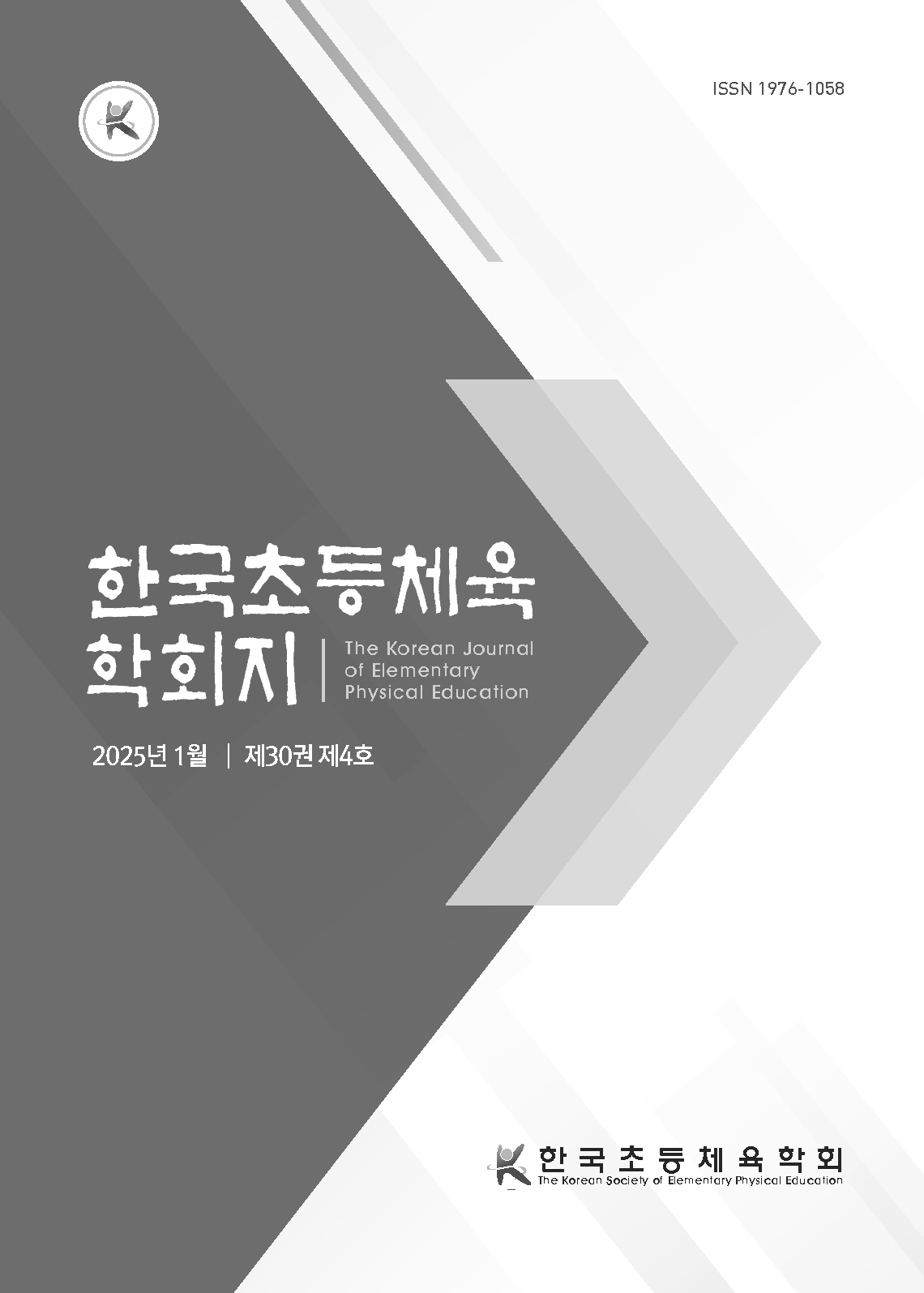이 연구의 목적은 초등학교 1・2학년 체육 교육과정 개발을 위한 기초 연구로, 체조 교육이 기본 움직임 기술(FMS)에 미치는 효과를 검증하는 데 있다. 연구 참여자는 B교육대학교 1학년 학생 135명으로, 비확률적 표집 방법 중 의도적 표집을 활용하였다. 기본 움직임 기술(FMS)의 학습 내용과 신체 효과를 검증하기 위해 질적 자료와 양적 자료를 수집하였으며, 질적 자료는 관련 문헌 고찰, 연구자의 연구 노트, 시청각 자료를 포함했으며, 신뢰성과 타당성을 높이기 위해 3회의 전문가 협의회를 진행하였다. 양적 자료는 바디핏 SW06을 사용해 수업 전후의 심박수를 측정했으며, SPSS version 26.0을 통해 대응표본 t-검정을 실시하였다. 유의수준은 ɑ=.05로 설정하였다. 기본 움직임 기술(FMS)은 비이동 동작 26개, 이동 동작 27개 총 53개의 세부 동작으로 구성되었고, 분석 결과 수업 전 심박수는 69.01, 수업 후 심박수는 109.21로 약 40.20 증가하였다. 이는 기본 움직임 체조 교육이 초등학교 1・2학년 학생들의 심폐지구력 향상과 다양한 스포츠에서의 효율적인 움직임 향상에 긍정적인 영향을 미치는 것으로 나타났다. 또한, 40년 만에 독립되는 1・2학년 체육교육은 부족한 신체활동을 보완하고, 기본적 움직임에 대한 이해를 바탕으로 평생체육의 기초를 마련하며, 스포츠복지사회로의 전환을 이끌어낼 것으로 기대된다.
The purpose of this study is to serve as a foundational research for the development of a physical education curriculum for elementary school grades 1 and 2, specifically examining the effects of gymnastics education on Fundamental Movement Skills(FMS). The participants in this study were 135 first-year students from B Education University, selected using a non-probability sampling method known as purposive sampling. To validate the learning content and physical effects of FMS, both qualitative and quantitative data were collected. Qualitative data included literature reviews, the researcher's notes, and audiovisual materials, with three expert meetings held to enhance the reliability and validity of the results. Quantitative data were collected using the Body Fit SW06 to measure heart rates before and after the classes, and a paired sample t-test was conducted using SPSS version 26.0, with a significance level set at α = .05. Fundamental Movement Skills(FMS) consisted of a total of 53 detailed movements, comprising 26 non-locomotor movements and 27 locomotor movements. The analysis revealed that the heart rate before the class was 69.01, while the heart rate after the class increased to 109.21, indicating an increase of approximately 40.20. This suggests that gymnastics education for grades 1 and 2 has a positive impact on improving the cardiorespiratory endurance of elementary school students and enhancing efficient movement in various sports. Moreover, with the separation of physical education for grades 1 and 2 occurring for the first time in 40 years, it is expected to compensate for the lack of physical activity and lay the foundation for lifelong physical education, facilitating the transition to a sports welfare society.
Ⅰ. 서론
Ⅱ. 연구방법
Ⅲ. 연구결과 및 논의
Ⅳ. 결론 및 제언
참고문헌
(0)
(0)
